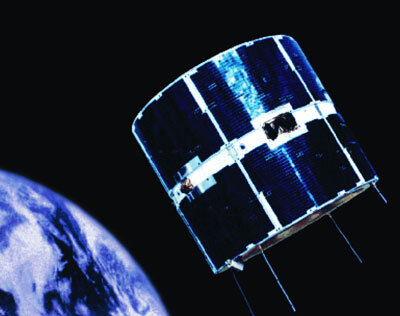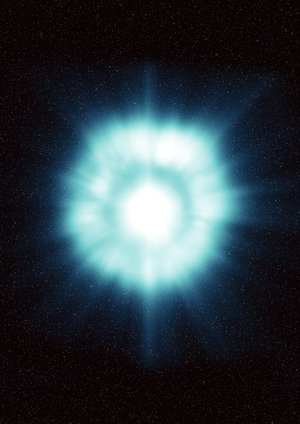Cos-B overview

Status
Completed (1982)
Objective
The first ESA mission to study gamma-ray sources, Cos-B operated for over six years, four years longer than planned. It was a forerunner of the current Integral mission.
Mission
Cos-B was the first ESA mission to study gamma-ray sources. Its results created a catalogue of these sources, known as the 2CG catalogue, and a complete gamma-ray map of the disc of our Galaxy, the Milky Way.
What’s special?
Cos-B, one of the most successful space missions ever, had no optical telescopes or complicated scientific instrumentation (though the central spark chamber was a significant technical achievement). It had one function - pointing in the direction of a star or other object and measuring its gamma-ray emissions.
The major result was the creation of the 2CG Catalogue that contained about 25 gamma-ray sources out of 30 observations made during the first three years and a complete gamma-ray map of the disc of the Milky Way.
Cos-B devoted much of its lifetime to the search for gamma-ray emissions from the Cygnus X-3 X-ray pulsar. Despite devoting about 10% of the entire mission, it did not detect gamma variability although the X-ray variability was clearly seen by the on-board X-ray monitor.
The end of the mission coincided with the end of its fuel supply, which had been conserved by careful choice of manoeuvres. The originally foreseen duration of the mission was two years, but Cos-B was finally switched off on 25th April 1982, having functioned successfully for more than 6.5 years.
Spacecraft
Cos-B detected gamma rays - an incoming gamma-ray crossed the protective Veto-Dome. The spark chamber was a device for converting the incoming gamma emission into an electron and a positron. This event triggered a spark in the spark chamber allowing experts to trace the paths and determine the direction of the incoming gamma ray.
The track information and parameters measuring the energy of the gamma ray were transmitted to a ground station on Earth.
Journey
The 37-hour orbit of Cos-B was an eccentric orbit that ensured that the satellite was outside the Earth's radiation belts for most of the time.
History
Only a handful of gamma-ray sources were known prior to Cos-B; based on observations from two previous missions: SAS 2 and TD-1. SAS 2 had detected the extragalactic diffuse gamma radiation and established that two radio pulsars (the Crab and Vela) were also gamma-ray sources. Cos-B was meant to add to the knowledge gathered by these earlier missions.
Partnerships
Cos-B was an ESA mission, built and equipped by European scientists and launched by NASA. Collaborating on Cos-B were the Laboratory for Space Research (Leiden, The Netherlands), Istituto di Fisica Cosmica e Informatica del CNR, (Palermo, Italy), Laboratorio di Fisica Cosmica e Tecnologie Relative del CNR, (Milano, Italy), Max-Planck-Institut für Extraterrestrische Physik, (Garching, Germany), Service d'Electronique Physique, (CEN de Saclay, France) and the Space Science Department of ESA, (Noordwijk, The Netherlands).















 Germany
Germany
 Austria
Austria
 Belgium
Belgium
 Denmark
Denmark
 Spain
Spain
 Estonia
Estonia
 Finland
Finland
 France
France
 Greece
Greece
 Hungary
Hungary
 Ireland
Ireland
 Italy
Italy
 Luxembourg
Luxembourg
 Norway
Norway
 The Netherlands
The Netherlands
 Poland
Poland
 Portugal
Portugal
 Czechia
Czechia
 Romania
Romania
 United Kingdom
United Kingdom
 Slovenia
Slovenia
 Sweden
Sweden
 Switzerland
Switzerland




























